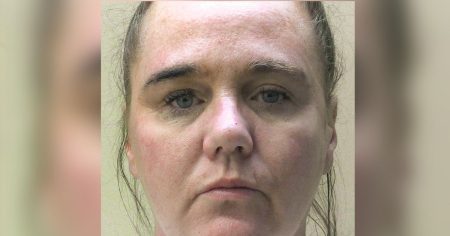Little Kayvon Wright developed red spots on his face and hands after walking near Chard Reservoir in Somerset, where he came into contact with the dangerous giant hogweed plant. Initially misdiagnosed as chickenpox, the spots turned into painful blisters, and he was rushed to a burns unit where he had to undergo a procedure to remove some of his skin. The giant hogweed’s sap hinders the skin’s ability to protect itself from the sun, causing severe burns upon exposure to natural light. Kayvon’s mother, Samantha Morgan, recalls the traumatic experience of seeing her son in excruciating pain and undergoing treatment in the hospital.
Kayvon suffered burns from the giant hogweed plant in 2019, and his mother is now raising awareness about the plant to prevent similar incidents. The plant produces burns that can often go unnoticed initially, leading to severe skin damage upon exposure to sunlight. Kayvon’s mother emphasizes the importance of educating children and parents about the dangers of certain plants and urges vigilance when out in nature. The giant hogweed, introduced to Britain in 1817 as an ornamental plant, has now become a widespread and hazardous plant that causes severe burns upon contact. Miss Morgan warns parents to be cautious and avoid letting children touch unfamiliar plants to prevent harmful encounters.
Miss Morgan describes the painful aftermath of Kayvon’s burns, which lasted for eight months, leaving him with red blotches on his skin. Despite the lengthy recovery period, Kayvon eventually regained his skin’s natural protection. His mother shares their story annually on social media to raise awareness about the dangers of giant hogweed and prevent similar incidents from occurring. Kayvon’s exposure to the plant led to a prolonged recovery process and the need for extra precautions when exposed to sunlight due to the long-lasting effects of the burns.
The giant hogweed plant continues to be a threat to unsuspecting individuals and children, who may unknowingly come into contact with its toxic sap. Samantha Morgan advises parents to stay informed about dangerous plants and educate their children about the risks they pose. Kayvon’s experience serves as a cautionary tale about the consequences of encountering hazardous plants in nature and the importance of taking preventive measures to avoid such incidents. The giant hogweed’s ability to cause severe burns upon skin exposure highlights the need for increased awareness and caution when exploring outdoor environments where these plants may be present.
Kayvon’s traumatic encounter with the giant hogweed plant underscores the need for public awareness campaigns about the risks associated with certain plant species. Miss Morgan’s efforts to raise awareness through social media platforms and annual posts aim to educate others about the potential dangers of encountering plants like giant hogweed. By sharing their story and advocating for caution, she hopes to prevent similar incidents and protect other children from the harmful effects of toxic plants. Kayvon’s journey to recovery serves as a reminder of the importance of recognizing and avoiding hazardous plants in order to ensure the safety and well-being of individuals, especially young children who may be more vulnerable to such risks.















